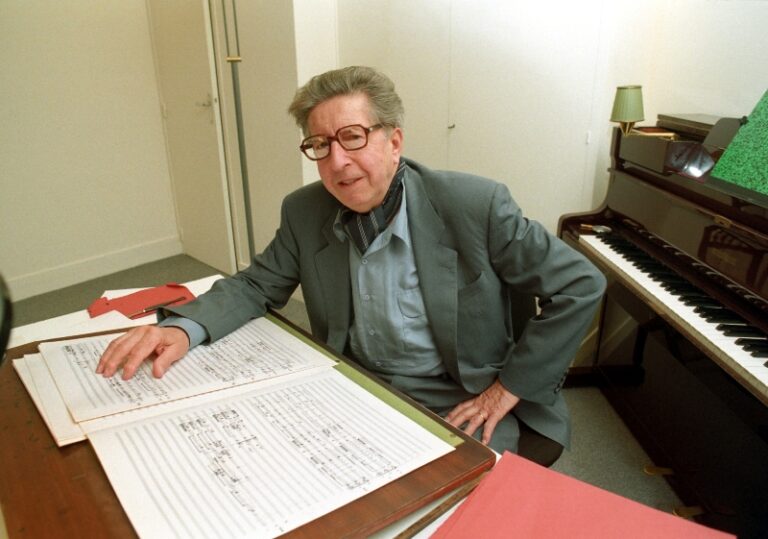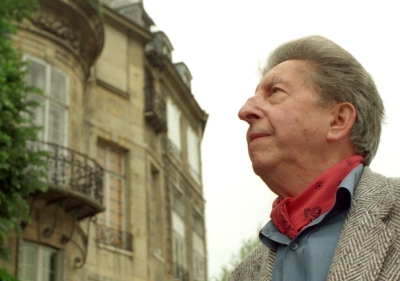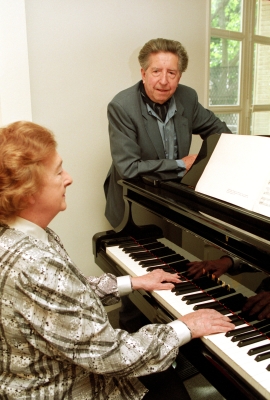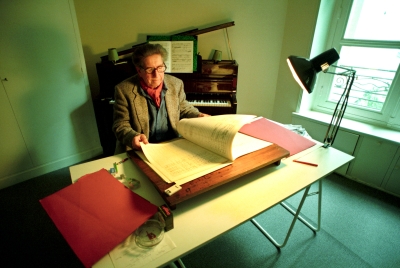The 6th
LaureateMusic
Henri Dutilleux

Henri Dutilleux’s music has always shown a fascination with timbre and the qualities of sound. Through painstaking analysis of the way different sounds combine and interact,he has built a unique musical language which is at once pleasant to the ear and highly innovative. In much of his music,fairly simple ideas are transformed gradually over time,in such a way that the audience can clearly hear the changes taking place. Although Dutilleux uses traditional structures and titles,his music is not exactly neoclassical,even though it reflects a taste for coolness,logic and precision. Rather he reinvents classical forms,and does so both on a small and grand scale.
Biography
A caricature of the development of music since the Second World War would depict a division between progressives (generally atonalists with small audiences) and traditionalists (generally tonalists with large audiences). This picture in turn gives way,after the factionalism of the 1950s and 60s,to the view that the complexities and dissonances of progressive music were the new establishment and that now it was more modern to create music that was straightforwardly beautiful. Such a view of history is an oversimplification,since there has been a group of significant,well-known and innovative composers who have consistently developed musical language in a way that appealed to audiences,whilst at the same time being original. Among these are Dmitri Shostakovich and Sir Michael Tippett,as well as Henri Dutilleux,whom the critic Wilfred Mellers once called ‘a composer who is not afraid to be beautiful’.
The music of Dutilleux is concerned with tonality: not so much the traditional diatonic harmony of classical music,but rather the tonality that derives from the natural acoustic properties of instruments. This includes their timbre and their interaction with the acoustic environments in which they are placed. Much of his musical material derives initially from the overtone series – the collection of naturally occurring pitches,first identified by Pythagoras,that form a characteristic,if faintly perceived,chord of varying intensity above any given sound. The variations in intensity within the structure of the series provide much of the sound’s character.
The use of this series differs from traditional tonality in that timbre,rather than pitch,is its guiding principle. The result is a sound-world which is generally pleasing to the ear and avoids abstraction. In a work such as the celebrated Métaboles for orchestra,1963–65,Dutilleux systematically explores the timbral possibilities offered by selected instrumental groupings with a cool precision and logic and an extreme consciousness of nuance and detail. There are five movements (Incantatoire,Linéaire,Obsessionnel,Torpide and Flamboyant),the first four of which deal with separate instrumental groups in turn,and the fifth unites all the groups. In order that the listener can follow the process of the composition,Dutilleux repeats certain pitches many times early on,so that one can memorise the musical object which he is about to transform. He describes the subsequent process thus: ‘As in nature – the world of insects,for example – a given element undergoes a succession of transformations. At a certain stage of evolution,the metamorphosis is so pronounced that it leads to a real change of essence.’ This change of essence includes some startling moments of orchestration. It is not uncommon to find,say,the double-basses playing in the top of their register above a trombone. It is a particular combination of timbres that he seeks,rather than any conventional notion of correct orchestration,and it is in such rigorous development of acoustic perceptions that his originality lies.
The musical material in Métaboles evolves through each movement until it has formed the theme for the start of the next movement in a way which is both satisfying and natural. The process resembles variation form,without in fact containing its underlying repetitive structure. This tendency to reinvent traditional form is something which Dutilleux has explored in other works,such as the First Symphony,1951,which deals with passacaglia; and the Second Symphony (‘The Double’),1959,which expands upon the concerto grosso. Common to all these reinventions is that the musical narrative is liberated from traditional imperatives and given its own direction within Dutilleux’s unique musical language. There is no serialism here,but neither is there any neo-classicism.
Dutilleux’s output includes two symphonies,a violin concerto,various orchestral film and ballet scores,and a range of works for the voice and instrumental combinations,as well as a celebrated cello concerto written for Mstislav Rostropovich,entitled Tout un monde lointain (‘A whole distant World’),1970. Such works consistently show the fluidity with which Dutilleux handles colour,melody and rhythm. His œuvre is a model for the continued relevance of musical craftsmanship.
Andrew Hugill
Chronology
Résonances (piano)
Made Professor of Composition at the Conservatoire de Paris.
Figures de résonances (two pianos)
Timbres, espace, mouvement, or<La Nuit étoilée>
-

©The Sankei Shimbun
-

At his home
-

At his home

